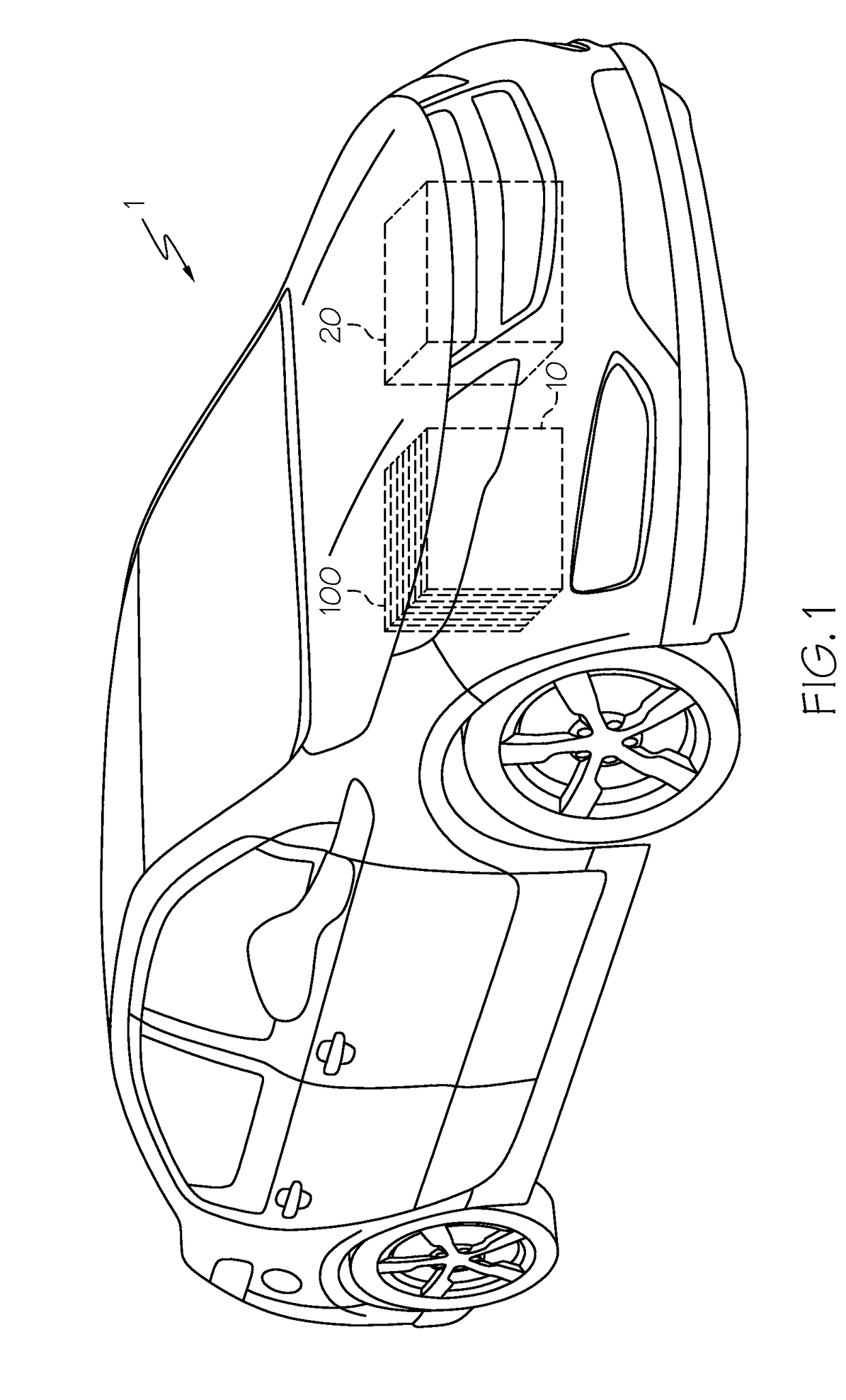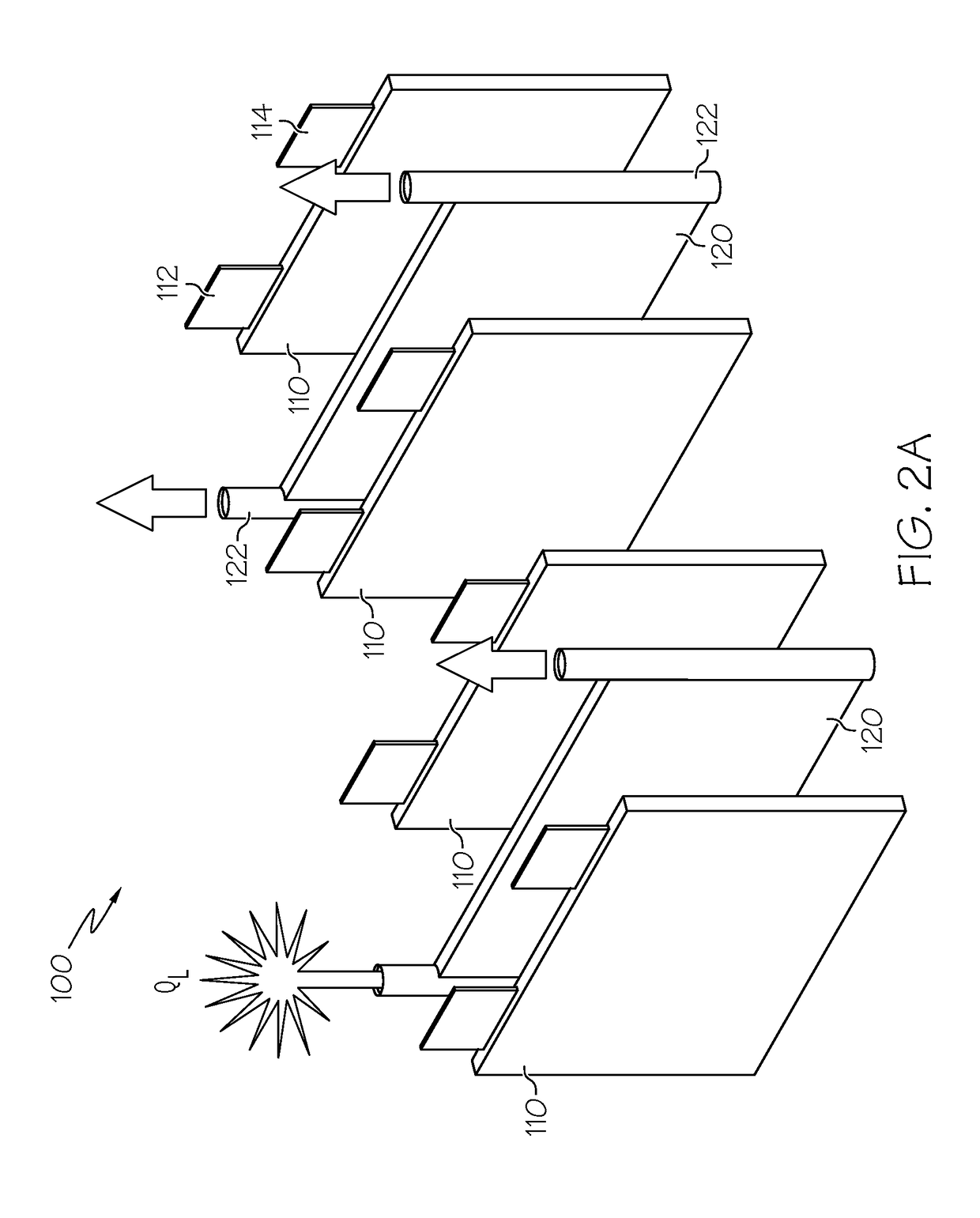Method for mitigating thermal propagation of batteries using heat pipes
a technology of heat pipes and batteries, applied in battery/fuel cell control arrangements, electric devices, lighting and heating apparatus, etc., can solve problems such as fluid pressure increase, and achieve the effects of limiting damage to batteries, increasing temperature uniformity, and protecting against thermal runaway conditions
- Summary
- Abstract
- Description
- Claims
- Application Information
AI Technical Summary
Benefits of technology
Problems solved by technology
Method used
Image
Examples
Embodiment Construction
[0023]Referring first to FIG. 1, a vehicle 1 includes a hybrid propulsion system in the form of a battery pack 10 and a conventional ICE 20. As mentioned above, such a vehicle is known as an HEV. Battery pack 10 employs numerous battery modules 100 that are typically arranged in a repeating array as shown. In one typical example, battery pack 1 may about two hundred individual battery cells (to be discussed in more detail below), although it will be appreciated by those skilled in the art that additional or fewer cells may be needed, depending on the power required. It will be further appreciated by those skilled in the art that vehicle 1 may not require an ICE 20; in such case, rather than being an HEV, it is a EV; either form is within the scope of the present invention.
[0024]Referring next to FIG. 2A, an exploded view depicting significant portions of a battery module 100 with passive thermal propagation mitigation features is shown, according to one embodiment of the invention. ...
PUM
| Property | Measurement | Unit |
|---|---|---|
| temperatures | aaaaa | aaaaa |
| temperatures | aaaaa | aaaaa |
| temperatures | aaaaa | aaaaa |
Abstract
Description
Claims
Application Information
 Login to View More
Login to View More - R&D
- Intellectual Property
- Life Sciences
- Materials
- Tech Scout
- Unparalleled Data Quality
- Higher Quality Content
- 60% Fewer Hallucinations
Browse by: Latest US Patents, China's latest patents, Technical Efficacy Thesaurus, Application Domain, Technology Topic, Popular Technical Reports.
© 2025 PatSnap. All rights reserved.Legal|Privacy policy|Modern Slavery Act Transparency Statement|Sitemap|About US| Contact US: help@patsnap.com



